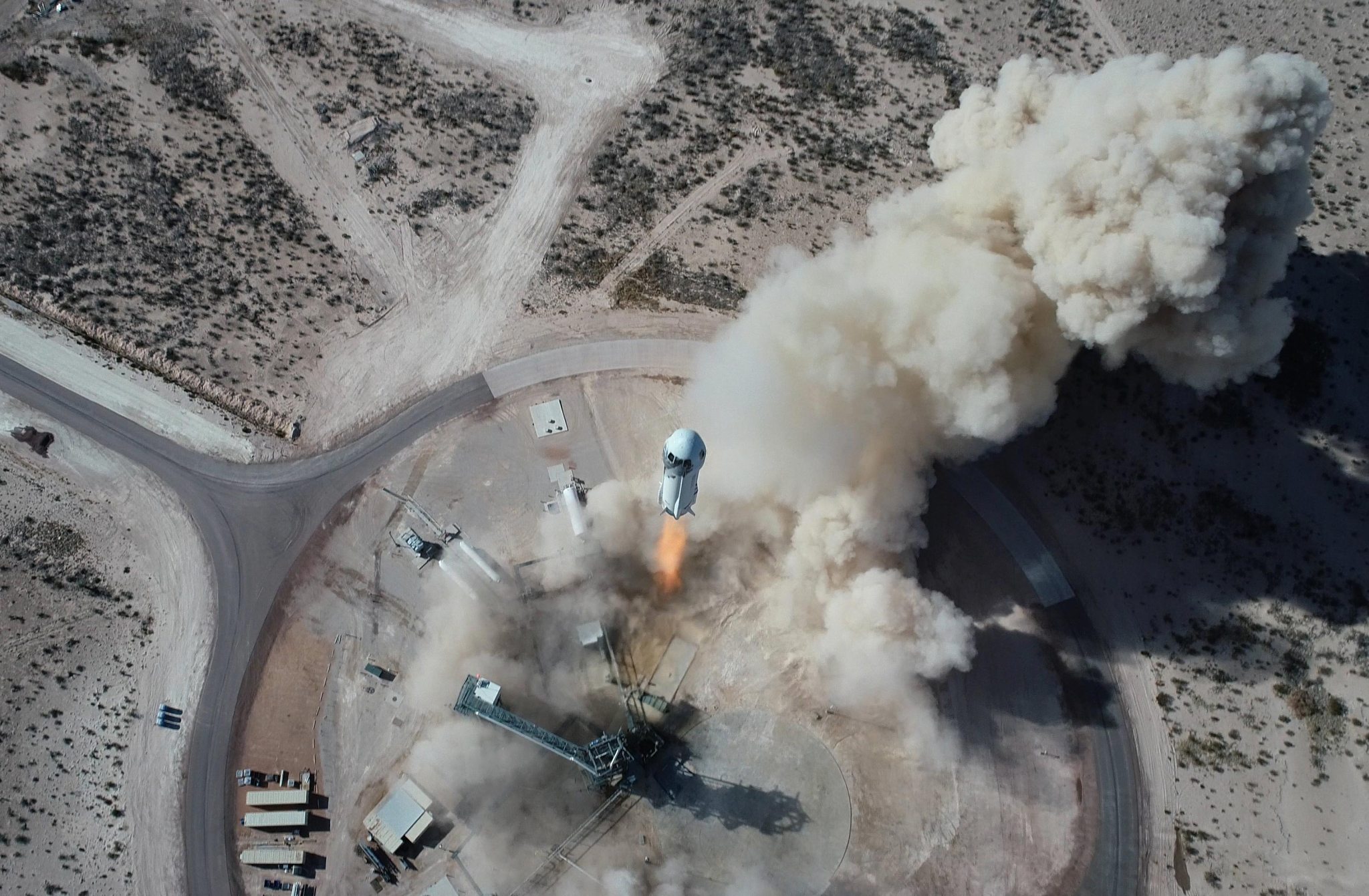At one-sixth that of Earth, the unique gravity of the lunar surface is one of the many variable conditions that technologies bound for the Moon will need to perform well in. NASA will soon have more options for testing those innovations in lunar gravity thanks to a collaboration with Blue Origin to bring new testing capabilities to the company’s New Shepard reusable suborbital rocket system.
Currently, NASA can approximate the Moon’s gravity on parabolic flights and in centrifuges on suborbital vehicles – both invaluable options for maturing promising innovations. But these methods provide only seconds of lunar gravity exposure at a time or limit the payload size, compelling NASA to explore longer-duration and larger size options. Blue Origin’s new lunar gravity testing capability – projected to be available in late 2022 – is answering that need.
New Shepard’s upgrades will allow the vehicle to use its reaction control system to impart a rotation on the capsule. As a result, the entire capsule essentially acts as a large centrifuge to create artificial gravity environments for the payloads inside. Blue Origin’s first flight of this capability will target 11 rotations per minute to provide more than two minutes of continuous lunar gravity, exposing the technologies to this challenging but difficult-to-test condition.
This new capability is made possible with the help of development funding and early purchase of payload space by NASA as part of its strategic investment in the U.S. spaceflight industry. The lunar gravity simulation will enable the agency to test and de-risk innovations critical to achieving the goals of the Artemis program, as well as lunar surface exploration and Moon-bound commercial applications.
“NASA is pleased to be among the first customers to take advantage of this new capability,” said Christopher Baker, program executive for the Flight Opportunities program at NASA Headquarters in Washington. “One of the constant challenges with living and working in space is reduced gravity. Many systems designed for use on Earth simply do not work the same elsewhere. A wide range of tools we need for the Moon and Mars could benefit from testing in partial gravity, including technologies for in-situ resource utilization, regolith mining, and environmental control and life support systems.”
New Shepard is currently among the commercial flight platforms available for technology flight testing contracted by NASA’s Flight Opportunities program. The program has helped mature hundreds of promising space-based technologies from NASA, industry, and academia by putting them through their paces on commercial suborbital vehicles before they move on to higher risk orbital missions – on CubeSats, the International Space Station, the Moon, or even Mars. New Shepard’s future lunar gravity capability will expand the suborbital flight test offerings not only for the company but for the Flight Opportunities program as well, adding to the specialized testing available for the technologies selected for testing by the program each year.
“Humanity has been dreaming about artificial gravity since the earliest days of spaceflight,” said Erika Wagner, PhD, New Shepard director of payloads at Blue Origin. “It’s exciting to be partnering with NASA to create this one-of-a-kind capability to explore the science and technology we will need for future human space exploration.”
About Flight Opportunities
The Flight Opportunities program is funded by NASA’s Space Technology Mission Directorate (STMD) and managed at NASA’s Armstrong Flight Research Center in Edwards, California. NASA’s Ames Research Center in California’s Silicon Valley manages the solicitation and evaluation of technologies to be tested and demonstrated on commercial flight vehicles.
By Danielle McCulloch and Nicole Quenelle
NASA’s Flight Opportunities Program
































